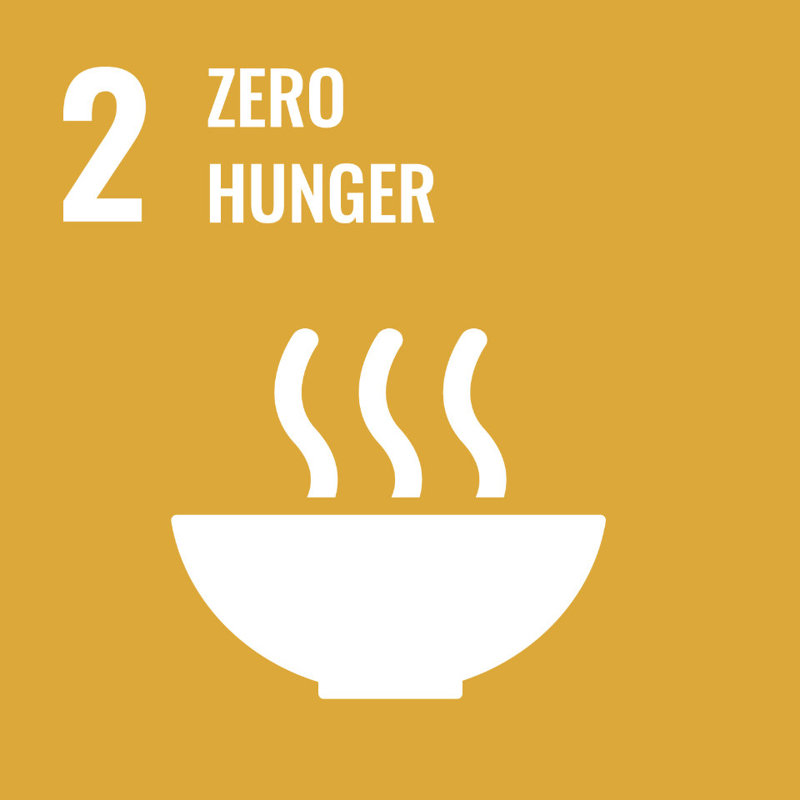UN’s Sustainable Development Goals (SDG 2): ending hunger

The second UN Sustainable Development Goal. Cotonea has been contributing to this for years.
With its organic cotton projects, Cotonea helps to secure food in its cultivation countries and contributes to achieving the UN’s Sustainable Development Goal (SDG) to end hunger.
To ensure that mankind has a chance of survival, the United Nations (UN) agreed on 17 global Sustainable Development Goals, which should be implemented by 2030. The second goal is to secure food for all. This is only possible with healthy soil.
Healthy soil through organic farming
Healthy soil is made up of humus, which is permeated with bacteria. It contains vital natural minerals and nutrients for plants and at the same time provides a natural habitat for diverse soil-dwelling organisms and creatures. Plants need loose, not compacted, soil in order to grow. Ecological agriculture works with crop rotation. For the Cotonea projects this means that sunflowers, sesame, chilli and other rotation crops are grown in addition to cotton. With organic cultivation, the fertility of the soil can be secured in the long term and even increased by implementing a smart rotation of diverse crops. For this, no expensive input is necessary, everything the farmer needs is available locally.
The experience gained in the Cotonea organic projects shows that the yields are at least similar to the yields of conventional cultivation. In this way over the course of 15 years, Cotonea was able to contribute to the healthy diet of the local people.
Cotonea’s contributions
In summary, Cotonea’s contributions to achieving and securing the UN’s second Sustainable Development Goal (a healthy diet) in developing countries are as follows:
- Ensuring the fertility of the soil in the long term through ecological agriculture
- The healthy soil is less susceptible to loss of earnings caused by pests or fungi, etc. due to biodiversity
- The farmers are independent and have a strong self-interest in sustaining the fertility of their soil, as their lives depend directly on the yields
- Initial training and further training of farmers to ensure higher yields
- Cotonea sees potential for even higher yields by researching the use of mixed crop cultivation of the fields